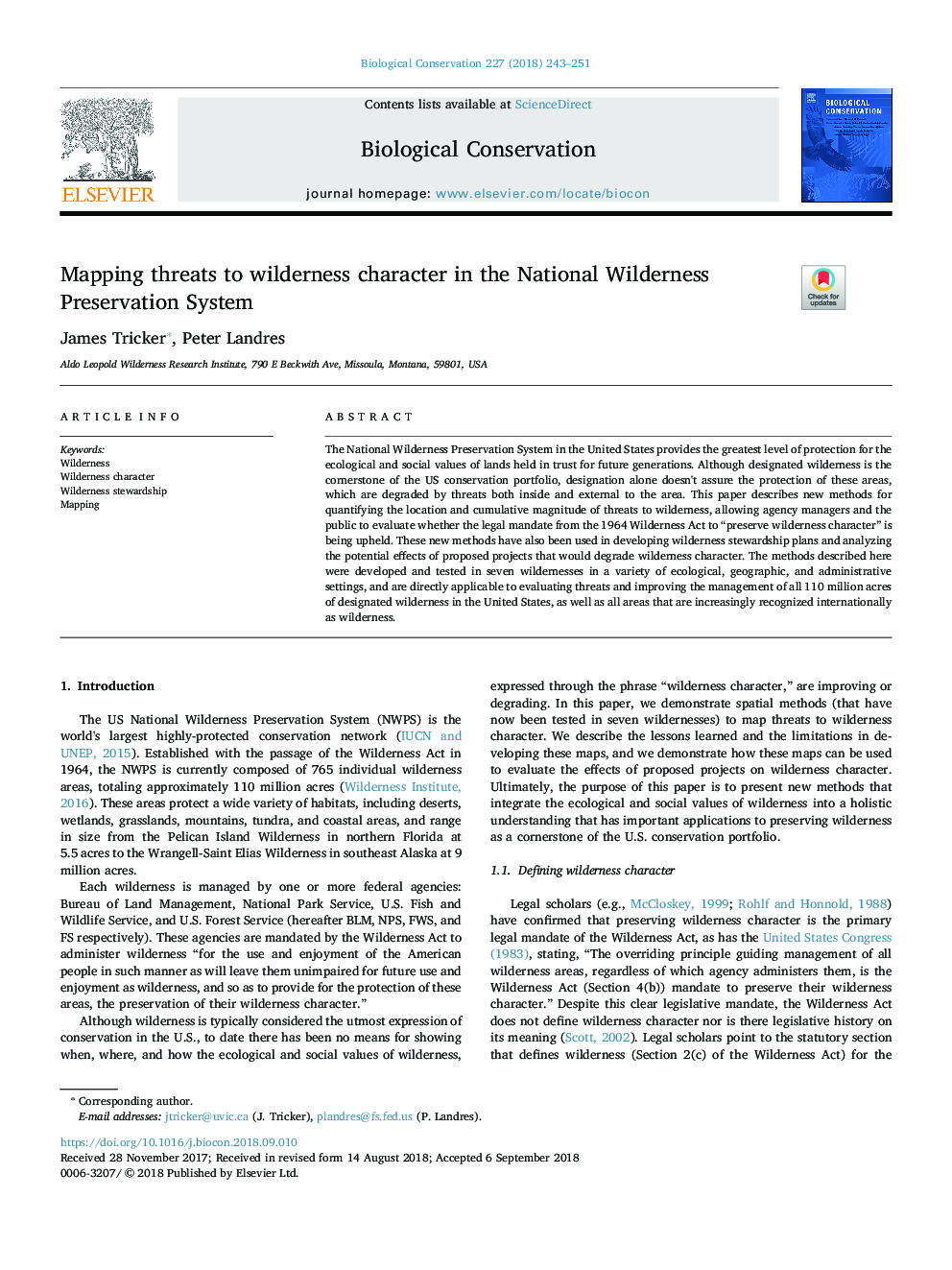| Article ID | Journal | Published Year | Pages | File Type |
|---|---|---|---|---|
| 11030483 | Biological Conservation | 2018 | 9 Pages |
Abstract
The National Wilderness Preservation System in the United States provides the greatest level of protection for the ecological and social values of lands held in trust for future generations. Although designated wilderness is the cornerstone of the US conservation portfolio, designation alone doesn't assure the protection of these areas, which are degraded by threats both inside and external to the area. This paper describes new methods for quantifying the location and cumulative magnitude of threats to wilderness, allowing agency managers and the public to evaluate whether the legal mandate from the 1964 Wilderness Act to “preserve wilderness character” is being upheld. These new methods have also been used in developing wilderness stewardship plans and analyzing the potential effects of proposed projects that would degrade wilderness character. The methods described here were developed and tested in seven wildernesses in a variety of ecological, geographic, and administrative settings, and are directly applicable to evaluating threats and improving the management of all 110 million acres of designated wilderness in the United States, as well as all areas that are increasingly recognized internationally as wilderness.
Keywords
Related Topics
Life Sciences
Agricultural and Biological Sciences
Ecology, Evolution, Behavior and Systematics
Authors
James Tricker, Peter Landres,
